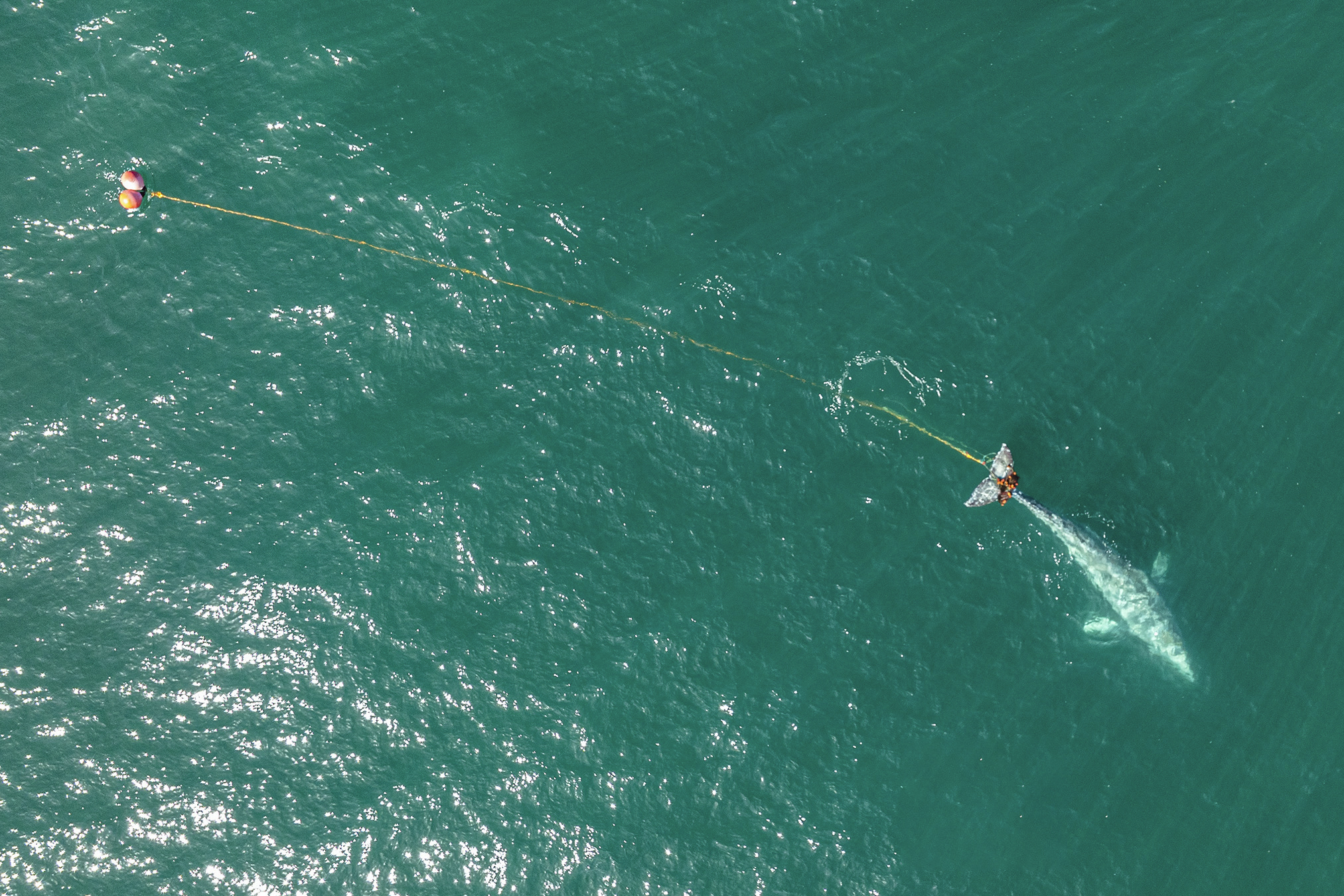A rescue team is searching for a missing whale entangled in a fishing net off the Northern California coast after a satellite tag officials were using to track the mammal fell off.
The 30-foot-long gray whale was last seen near Thornton State Beach in Daly City, just south of San Francisco, on Tuesday. The animal has been making its way up the coast after it was first spotted near Laguna Beach on March 22 with a gill net attached to its tail.
Officials with the National Oceanic and Atmospheric Administration Fisheries, Marine Mammal Center and California Department of Fish and Wildlife have been tracking it ever since with the tag that they placed on the net after they were unable to free it in Southern California.
But the tracker stopped responding several days ago. Then, on Tuesday, when the team spotted the whale again, officials discovered the tracker was no longer attached.
“We still haven’t figured out why, but something happened out there where the satellite tag buoy broke off,” Justin Viezbicke, California marine mammal stranding response coordinator for the NOAA, told The Standard.
The team did not have a new tracker to put on the whale Tuesday. By the time it acquired one on Wednesday morning, the whale was gone.
Now, with wet weather returning to the region on Friday and Saturday, officials said it may be difficult to attach the new tracker and remove the net from the whale’s tail if and when they find it.
“This weekend, the weather conditions do not look favorable at all from a human and whale safety perspective,” Marine Mammal Center spokesperson Giancarlo Rulli said.
Viezbicke said if it is too windy or foggy it could be difficult to see and work on the whale.
All of the work to remove the net will be done from a boat, he said, because it is too dangerous for divers, as the whale is too fast for divers to safely keep up swimming with it.
Any entanglement of rope, nets or other debris is life-threatening to whales if not removed, Viezbicke said. They can lead to tail or fin removal and large open wounds that can become infected.
“This gill net on the tail is inhibiting the whale’s ability to swim like it normally would,” Viezbicke said. “The extra weight and drag is pulling down on its tail, and we’ve seen gray and humpback whales that have had their tails completely removed.”
